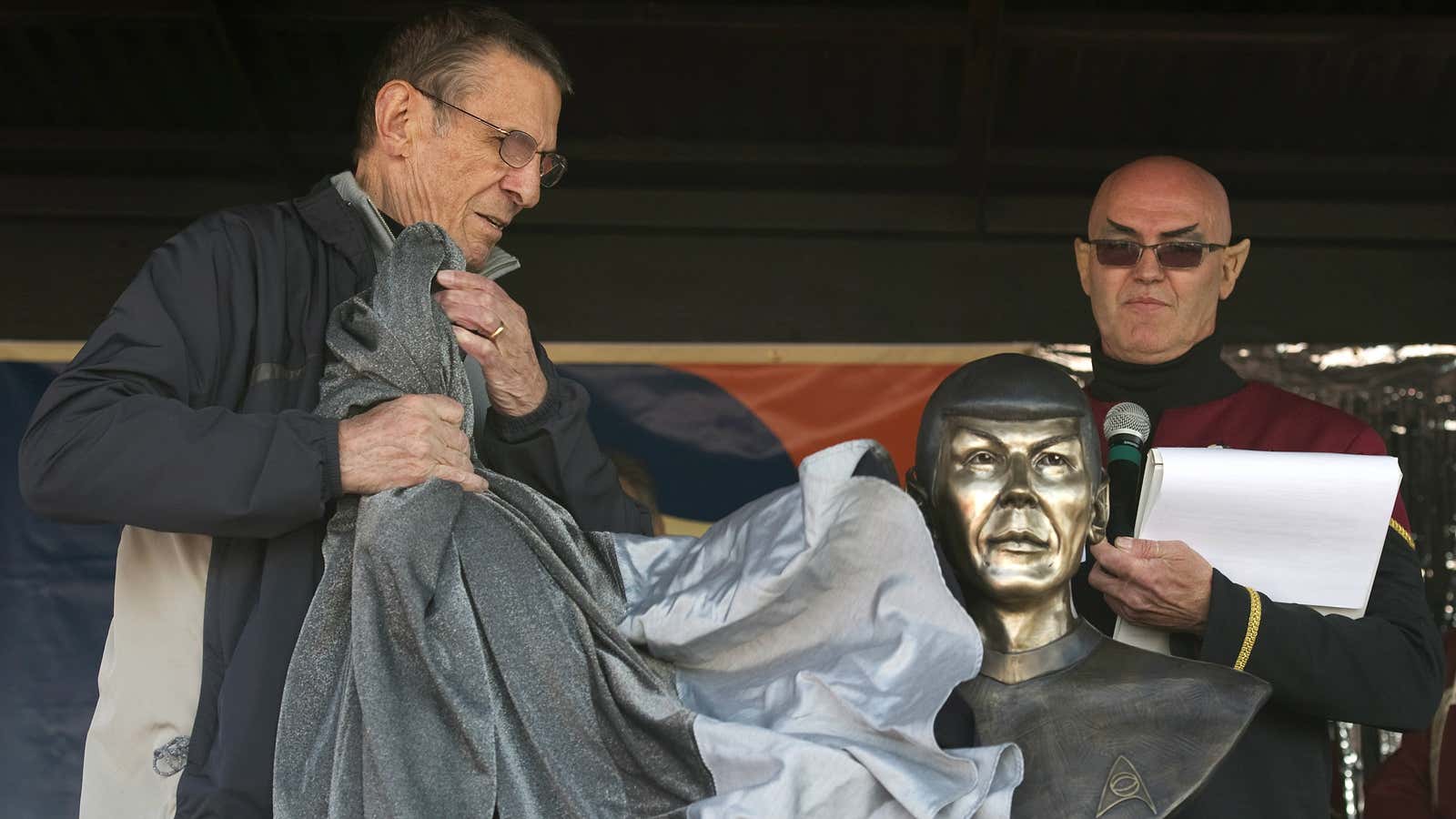Landing what turns out to be iconic Hollywood role can be both a blessing and a curse. Yes, you are guaranteed a lifetime of fame and opportunities, but the flip side is that you are often never seen as anything more than that one character—even decades later.
It can be a tricky, near-impossible road to navigate, but Star Trek star Leonard Nimoy—who died at 83 on Feb. 27, of end-stage chronic obstructive pulmonary disease—managed to do so splendidly. And his ability to make the most of the gift that was Mr. Spock is something that should be emulated by anyone else in show business who finds themselves tethered to a single beloved, worshipped character.
Whether they were Star Trek fans or not, everyone knows and loves Nimoy as Spock, the human-Vulcan hybrid, logical-thinking first officer of the Starship Enterprise. Star Trek premiered in 1966 and lasted only three seasons, but became a cult phenomenon that launched a film series, multiple TV spinoffs and a lucrative franchise that thrives to this day.
That kind of fame can be paralyzing and constricting, and Nimoy, who also starred in the Mission: Impossible TV series and had dozens of other television and film roles under his belt, at first pushed back against it. He called his 1977 autobiography, I Am Not Spock, and was only lured back to 1982’s Star Trek II: The Wrath of Khan in part by the prospect of filming Spock’s death scene.
That could have been the end for his (voluntary) inclusion in the Star Trek universe, and he could have spent the next decades trying to distance himself as far from Spock as possible. But instead, Nimoy relented, and asked for Spock to return to the series, while also smartly realizing that he could leverage his success as Spock to create another exciting new challenges for him. So Spock was resurrected for Star Trek III: The Search for Spock, which—not at all coincidentally—Nimoy also directed. He went on to direct the fourth—and along with Khan, the best—Star Trek film as well, The Voyage Home, as well as several non-Star Trek movies, including the 1987 smash comedy Three Men and a Baby.
But directing wasn’t all that Nimoy did in the ’80s to leverage his Star Trek popularity. My first non-Spock exposure to Nimoy was as the host of the fantastic hit ‘80s Nickelodeon TV show, Standby: Lights, Camera, Action!, which took kids like me behind the scenes of movie productions. I learned so much from that show—I can still recite verbatim the segment where Nimoy explained what movie trailers were, screening the one for Scarface as an example, and why they were called “trailers” even though they came before the film. With that show, Nimoy helped educate and inspire a generation of movie lovers.
He also followed his other artistic passions, branching out into poetry (2002’s A Lifetime of Love: Poems on the Passage of Life), photography (2002’s Shekhina, black and white photography) and music. He also wrote another autobiography in 1995. The title of that one? I Am Spock.
While Nimoy stayed happily connected to the Star Trek franchise—playing himself and/or Spock on shows like The Simpsons and The Big Bang Theory, and appearing in both of the most recent, rebooted Star Trek films as, he also never stopped broadening his acting horizons as well. In his last great role, he captivated a new generation of sci-fi fans on Fringe as Dr. William Bell.
Spock’s signature Star Trek phrase (said alongside the famous Vulcan hand salute, which I spent far too much time perfecting as a child) was “live long and prosper.” Nimoy took those words to heart and was able to do just that. He embraced one of the most famous roles of all-time, and made it a blessing instead of a burden.
